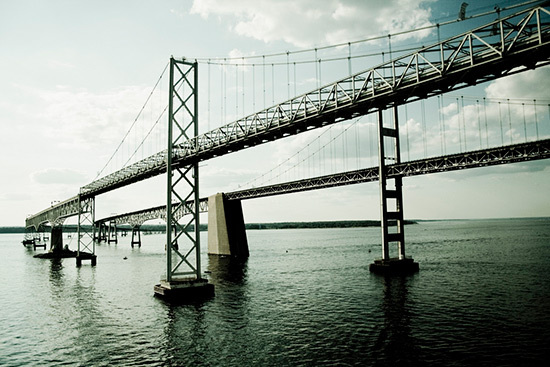Draft Watershed Agreement available for public feedback
The Bay Program plan will establish new goals and outcomes for restoration across the watershed.
Three decades after the first Chesapeake Bay Agreement was signed, the Chesapeake Bay Program is seeking public input on a new agreement that will guide partners in the restoration of the Chesapeake Bay and recommit stakeholders to conservation success.

Image courtesy JoshuaDavisPhotography/Flickr
The draft Chesapeake Bay Watershed Agreement establishes a series of goals and outcomes that address water quality, fisheries and habitat, land conservation, public access and environmental literacy. Signatories will include the states of Maryland, Virginia, Pennsylvania, New York, West Virginia and Delaware; the District of Columbia; the Chesapeake Bay Commission; and the U.S. Environmental Protection Agency.
By signing the agreement, partners will commit to taking the steps needed to attain a healthy watershed: to lower nutrient and sediment pollution; to sustain blue crabs, oysters and forage fish; to restore wetlands and underwater grass beds; to conserve farmland and forests; and to boost public access to and education about the environment.
“Healthy, sustainable fisheries, plentiful habitats for wildlife, conservation efforts and citizen actions that support clean water and clean air—this is how we create a healthy Bay,” said Bay Program Principals’ Staff Committee Chair and Maryland Department of Natural Resources Secretary Joe Gill in a media release. “Connecting our citizens to these resources through public access and environmental education completes the picture, instilling the personal sense of ownership key to our progress.”
“The goals and outcomes that are outlined in the Chesapeake Bay Watershed Agreement are interrelated: improvements in water quality can mean healthier fish and shellfish; the conservation of land can mean more habitat for wildlife; and a boost in environmental literacy can mean a rise in stewards of the Bay’s resources,” said Bay Program Director Nick DiPasquale. “By signing this agreement, Bay Program partners will acknowledge that our environment is a system and that these goals will support public health and the health of the watershed as a whole.”
The draft is available here. The Bay Program welcomes comments on this draft between January 29 and March 17, 2014. Interested parties can offer input at the March 13 meeting of the Management Board or by submitting an online comment or an email to the Bay Program.

Comments
There are no comments.
Thank you!
Your comment has been received. Before it can be published, the comment will be reviewed by our team to ensure it adheres with our rules of engagement.
Back to recent stories